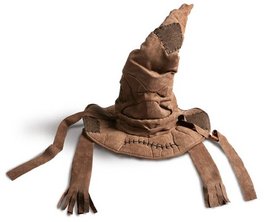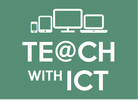How to create your very own BBC micro:bit "Harry Potter Sorting Hat"

In this lesson, students will create a Harry Potter style sorting hat using the BBC micro:bit.
Learning Objectives:
- Understand and use sequence in an algorithm
- Understand and data structures in an algorithm (for example, Lists, Tables or Arrays)
- Understand the importance of comments in code
Curriculum Mapping:
KS2:
KS3:
KS2:
- Design, write and debug programs that accomplish specific goals; solve problems by breaking them into smaller parts. Select, use and combine a variety of software on a range of digital devices to design and create a range of programs.
- Use sequence, selection and repetition in programs; work with variables and various forms of input and output
- Use logical reasoning to explain how some simple algorithms work; detect and correct errors in algorithms and programs
KS3:
- Use two or more programming languages, at least one of which is textual, to solve a variety of computational problems.
What you will need:
- Web enabled device (PC, Tablet, Phone) with an up-to-date browser (Internet Explorer, Safari, Chrome)
- BBC micro:bit simulator (www.microbit.co.uk/)
- BBC micro:bit (Optional)
Introduction:
The Sorting Hat is an artefact used at Hogwarts in the Harry Potter books. The hat determines which of the four school houses (Gryffindoe, Slytherin, Hufflepuff and Ravenclaw) each new student is assigned to. The hat resembles a wide-brimmed wizard's hat, with folds and tears that make it appear to have eyes and a mouth. During the opening banquet at the beginning of each school year, the Hat is placed on every first-year student's head. The Hat announces its choice aloud, and the student joins the selected house.
In this lesson, students will create a Harry Potter style sorting hat using their BBC micro:bit.
In this lesson, students will create a Harry Potter style sorting hat using their BBC micro:bit.
Starter:
Show students the 'Sorting Hat' scene from Harry Potter and the Sorcerer's Stone to set the scene:
Show students the 'Sorting Hat' scene from Harry Potter and the Sorcerer's Stone to set the scene:
Explain to students that they will be creating their very own 'Harry Potter' style sorting hat that will select a house at random when a button is pressed on their BBC micro:bit.
Programming the micro:bit
Direct students to the link below and ask students to follow the instructions.
Tutorial:
Step-by-step tutorial (Opens directly inside the micro:bit simulator):
Micro:bit Sorting Hat Tutorial – Creating a 'Harry Potter' style Sorting Hat using the BBC micro:bit (step-by-step tutorial)
Worksheet:
Direct students to the link below and ask students to follow the instructions.
Tutorial:
Step-by-step tutorial (Opens directly inside the micro:bit simulator):
Micro:bit Sorting Hat Tutorial – Creating a 'Harry Potter' style Sorting Hat using the BBC micro:bit (step-by-step tutorial)
Worksheet:
| sorting_hat_tutorial.docx |
Extension:
- Change the names of your houses in your sorting hat - if your school operates a house system, you can use your school houses.
- Modify your code so that it runs when you shake your micro:bit.
- Create a random name selector that will randomly pick a student in your class.
Licence:
Unless otherwise specified, everything in this repository is covered by the following licence:
Unless otherwise specified, everything in this repository is covered by the following licence:
micro:bit "Sorting Hat" lesson is licensed under a Creative Commons Attribution 4.0 International License.


